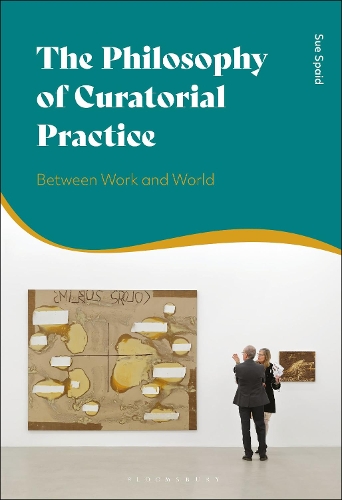
The Philosophy of Curatorial Practice: Between Work and World
(Hardback)
Available Formats
Publishing Details
The Philosophy of Curatorial Practice: Between Work and World
By (Author) Sue Spaid
Bloomsbury Publishing PLC
Bloomsbury Academic
15th October 2020
United Kingdom
Classifications
Tertiary Education
Non Fiction
111.85
Physical Properties
Hardback
280
Width 156mm, Height 234mm
585g
Description
This book walks us through the process of how artworks eventually get their meaning, showing us how curated exhibitions invite audience members to weave an exhibitions narrative threads, which gives artworks their contents and discursive sense. Arguing that exhibitions avail artworks as candidates for reception, whose meaning, value, and relevance reflect audience responses, it challenges the existing view that exhibitions present already-validated candidates for appreciation. Instead, this book stresses the collaborative nature of curatorial practices, debunking the twin myths of autonomous artists and sovereign artistic directors and treating presentation and reception as separate processes. Employing set theory to distinguish curated exhibitions from uncurated exhibitions, installation art and collections, it demonstrates how exhibitions grant spectators access to concepts that aid their capacity to grasp artifacts as artworks. To inform and illuminate current debates in curatorial practice, Spaid draws on a range of case studies from Impressionism, Dada and Surrealism to more contemporary exhibitions such as Maurizio Cattelan All (2011) and Damien Hirst (2012). In articulating the process that cycles through exploration, interpretation, presentation and reception, curating bears resemblance to artistic direction more generally.
Reviews
A necessary addition to the literature on curating, Sue Spaids book scopes a philosophical shape for an understanding of curating. It places a stake in the tradition of aesthetics for exhibitions, as distinct from artworks and artists intentions. Spaid underpins this philosophy nonetheless with her considerable knowledge and experience as a museum curator. In the growing literature on curatorial theory and the history of exhibitions, there isnt any other book quite like The Philosophy of Curating. It is an original and invaluable book. * Alison Green, Reader in Art, Curating and Culture, University of the Arts London, UK *
As a practitioner, Spaid creatively reveals the inner workings of the collaborative Artworld to (finally) give voice to the curator. Her fresh and provocative vision challenging the aesthetics of Beardsley, Danto and Dickie is rich with examples of exhibitions-as-events that pose hypotheses to spectators who play a vital interpretive role. * Peg Brand Weiser, Emerita Associate Professor of Philosophy and Women's Studies, Indiana University, USA *
The Philosophy of Curatorial Practice provides an invigorating new model for articulating the practice of curating today. It argues, from the unprecedented premise of analytical aesthetics, that exhibitions tether artworks to the world in order to enable audiences to access their meaning. This is without doubt a most welcome addition to the nascent field that is the philosophy of curating. * Jean-Paul Martinon, Reader in Visual Cultures, Goldsmiths, University of London, UK *
What a book! Sue Spaid is an exception among contemporary art curators. Rather than rely on critical theory, she works rigorously within a framework of analytical and continental philosophy. She tempers her analyses with first-hand knowledge of the tough realities of the artworld, often missing from theoretical discussions. A triumph! * Ivan Gaskell, Professor of Cultural History and Museum Studies, Bard Graduate Center, USA *
The Philosophy of Curatorial Practice is an important addition to curatorial studies. Working beyond art history, it positions curating as a form of engaged practice. Astutely taking on philosophical theory, it moves behind the scenes of display, to reveal those often obscured strategies which lend meaning to the work of art. * Andrew Renton, Professor of Curating, Goldsmiths, University of London, UK *
Author Bio
Sue Spaid is an Independent Scholar and Associate Editor of Aesthetic Investigations.
